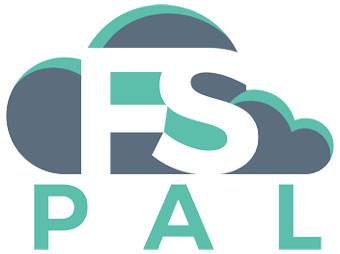In this article we will look at ideas that banks have already started to offer and will mature during the next few years. I believe it will help decision makers in banks, to check whether they have covered the main areas where technology can make a difference, either by benefitting customers or improving their operations.
Big Data – the new Servicing King?
 Big Data is the hot topic now, and it will be the basis of excellent customer service in the future. The smarter the insights that we develop for customers, the easier it will be to serve their needs. Banks need to invest in making sense of their data, as this is generally a black hole. The information is there, but spread through more than 1000 different systems that are mostly undocumented and / or nobody understands.
Big Data is the hot topic now, and it will be the basis of excellent customer service in the future. The smarter the insights that we develop for customers, the easier it will be to serve their needs. Banks need to invest in making sense of their data, as this is generally a black hole. The information is there, but spread through more than 1000 different systems that are mostly undocumented and / or nobody understands.
Slick Self Service
One of the best ways to service customers is by providing excellent self-servicing capabilities. This covers the ability to do more transactions online, as well as providing better information.
A good example, from my personal experience, is querying transactions. A few weeks ago I spotted a £170 transaction on my statement that I didn’t understand, so I called my bank. I was on hold for about 30 minutes, waiting for an advisor to make sense of it. In the end, he determined it was an ATM transaction, though they couldn’t provide more details. In the meantime, I had worked out where and why I spent the funds by looking at my emails.
 If I had been using the Mondo app, then I would have had an entry showing that it was an ATM withdrawal, a map of where the ATM was located, and the ability for me to include notes and a receipt of the transaction. That is what I call self-service. Mondo also allows you to temporarily freeze your card, it even notifies you when you touch into the London Underground and it will allow you to automatically request refunds for uncompleted journeys.Their search tool is fantastic, allowing several filters for transactions including location of transaction, category of spending, person / company when sending and receiving funds.
If I had been using the Mondo app, then I would have had an entry showing that it was an ATM withdrawal, a map of where the ATM was located, and the ability for me to include notes and a receipt of the transaction. That is what I call self-service. Mondo also allows you to temporarily freeze your card, it even notifies you when you touch into the London Underground and it will allow you to automatically request refunds for uncompleted journeys.Their search tool is fantastic, allowing several filters for transactions including location of transaction, category of spending, person / company when sending and receiving funds.
The evolution of Webchat
 Since 2011, Webchats in UK call centers have grown more than 300%, with more than 250 million chats being completed. We can expect this trend to continue. The optimal customer journey for web chats entails using a ‘virtual agent’ first, which will search for an answer in a knowledge database. If there are no satisfactory answers, the customer is then connected to the first available agent.
Since 2011, Webchats in UK call centers have grown more than 300%, with more than 250 million chats being completed. We can expect this trend to continue. The optimal customer journey for web chats entails using a ‘virtual agent’ first, which will search for an answer in a knowledge database. If there are no satisfactory answers, the customer is then connected to the first available agent.
There are two improvements that I believe will happen in this area. The first one is the optimization of the virtual agents to increase the percentage of times automated answers can be used. This can be done by including more contextual data and also by improving the Knowledge Databases. The second area is enabling the channel to handle higher risk transactions, such as payments. This requires a second layer of authentication (on top of secure site login), and a clever way of doing this is by using mobile apps.
Some banks have also started experimenting with servicing using apps such as WhatsApp. I personally think it a great idea, as long as security concerns are addressed. It removes the need to download a new app or visit a website.
Hey Siri, how much interest am I getting on my accounts?
 Several banks have started experimenting with Virtual Concierges, smart assistants that can provide valuable information for customers. These virtual buddies can be embedded in banking mobile apps. They can answer questions using natural language, such as “How much did I spend on my car last year?” or “Does my insurance cover flood damage?”
Several banks have started experimenting with Virtual Concierges, smart assistants that can provide valuable information for customers. These virtual buddies can be embedded in banking mobile apps. They can answer questions using natural language, such as “How much did I spend on my car last year?” or “Does my insurance cover flood damage?”
Santander has been experimenting with Nuance Communications, the leader in intelligent virtual assistants. Its pilot around card spending details has had a high level of success . According to research from Nuance, 58% of 18 to 25 year old smartphone users interact periodically with a speech-enabled virtual assistant. A US bank, USAA, has also built its own virtual concierge , with the help of Fingenius. The product can talk SMS, email, and even hold phone conversations. USAA members can pay bills, call up past transactions, view detailed account information and much more. I haven’t tried the service yet but I believe that these tools will become very popular as they increase their level of detail and responsiveness.
Screen Sharing and Cobrowsing
 Several banks have started to combine telephone calls with internet sessions to provide branch like experiences.
Several banks have started to combine telephone calls with internet sessions to provide branch like experiences.
Co-browsing, the joint navigation of webpages through the internet, can assist customers to complete complex activities such as filling in forms and navigating applications, and can reduce call handling times significantly. Several products are available such as RightNow from Oracle and LiveEngage from Liveperson.
One innovative solution created by UK based Vizolution is vScreen, a tool which can be used for sharing content with customers, filling forms online, handling file uploads / downloads and even signing documents (such as contracts or electronic mandates). Entire sales and servicing journeys can be digitalized in record time. Vizolution quote customer satisfaction ratings of up to 97% and uplift in sales of 45% for the telephony channel in one of their case studies in a retail UK bank.
Phone Servicing changes – adieu IVR
When customers need to speak with somebody, they don’t want to be placed through IVRs, a technology that is slowly dying. A smart solution is provided by Barclays. Their Click to Call solution connects you to an advisor in an authenticated mode, as long as you have already identified yourself in app.
 HSBC have launched voice recognition and one of its brands, firstdirect, have mentioned that this will soon be rolled out to all of its customers. The solution recognizes the voice of the customer in 2 seconds, and no passwords need to be keyed in. Also, verification happens not only at the start of the call, but at different stages through it, which avoids the problem of fraudsters using a recording to authenticate themselves.
HSBC have launched voice recognition and one of its brands, firstdirect, have mentioned that this will soon be rolled out to all of its customers. The solution recognizes the voice of the customer in 2 seconds, and no passwords need to be keyed in. Also, verification happens not only at the start of the call, but at different stages through it, which avoids the problem of fraudsters using a recording to authenticate themselves.
Video Conferencing – now you see me
 Banks have offered complex products and services through face to face meetings, in order to explain these properly. However, video conferencing technology has started to replace these meetings. There are two flavours for video conferencing. The one that has been trialled the most compromises customers visiting local branches, and using a video terminal provided to dial into a contact center, where specialists will handle requests. Customers are able to see the specialist, receive documents, sign documents and get them back to the specialist via a scanner. Cisco is the leader in the development of this technology.
Banks have offered complex products and services through face to face meetings, in order to explain these properly. However, video conferencing technology has started to replace these meetings. There are two flavours for video conferencing. The one that has been trialled the most compromises customers visiting local branches, and using a video terminal provided to dial into a contact center, where specialists will handle requests. Customers are able to see the specialist, receive documents, sign documents and get them back to the specialist via a scanner. Cisco is the leader in the development of this technology.
More experimental, some banks have started allowing customers to do videoconferencing from their own devices, from the convenience of their homes. Different banks have tried multiple solutions here, including Webex, Gotomeeting and even Skype, with limited success. The biggest challenge has been to establish reliable sessions, due to available bandwidth. I believe this barrier will be solved, with faster connections becoming available soon.
Where will we end up?
 As banks test and learn the different technologies, we can expect them to be integrated in order to create a seamless experience for customers. There is no absolute winner in this technology parade, as different customers have different preferences for being served.
As banks test and learn the different technologies, we can expect them to be integrated in order to create a seamless experience for customers. There is no absolute winner in this technology parade, as different customers have different preferences for being served.
If you start your journey on the web, you might try the virtual assistant, and then escalate to a web-chat with co-browsing. Alternatively, if you start on your mobile, your journey could include chatting to your virtual concierge, followed by a chat with an agent, and then escalating the query onto a video conference.
In my opinion, regardless of how many technologies emerge, great servicing will come from the perfect fusion of data and user experience. The banks that manage to reinvent their services, to solve genuine customer problems, will create the best servicing experience.

